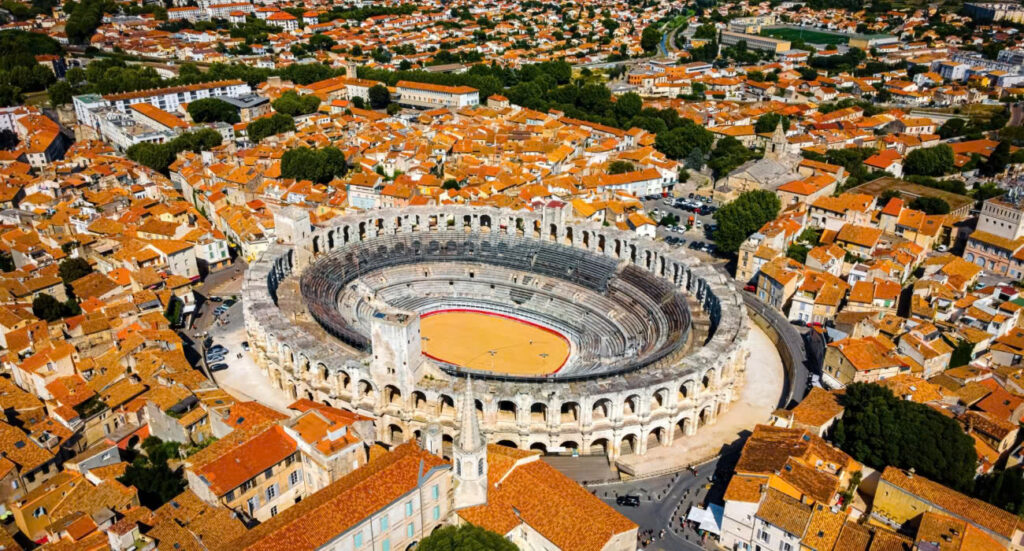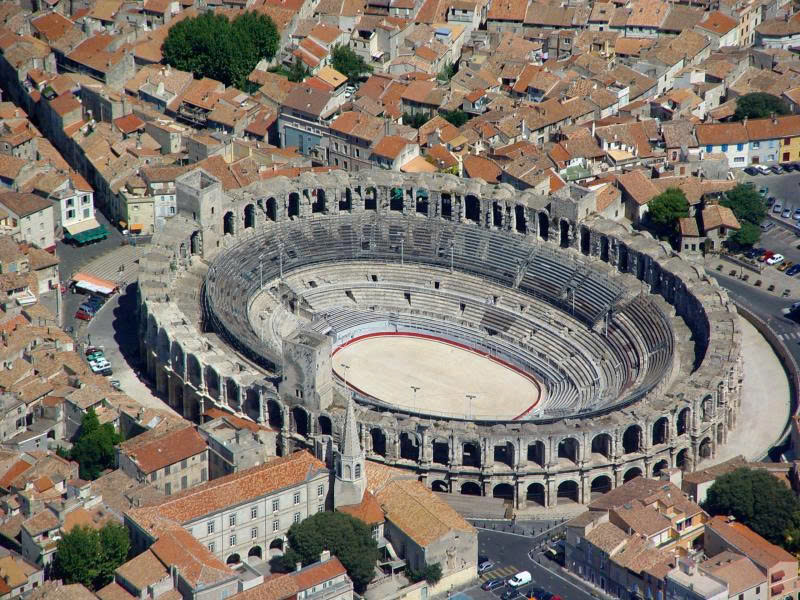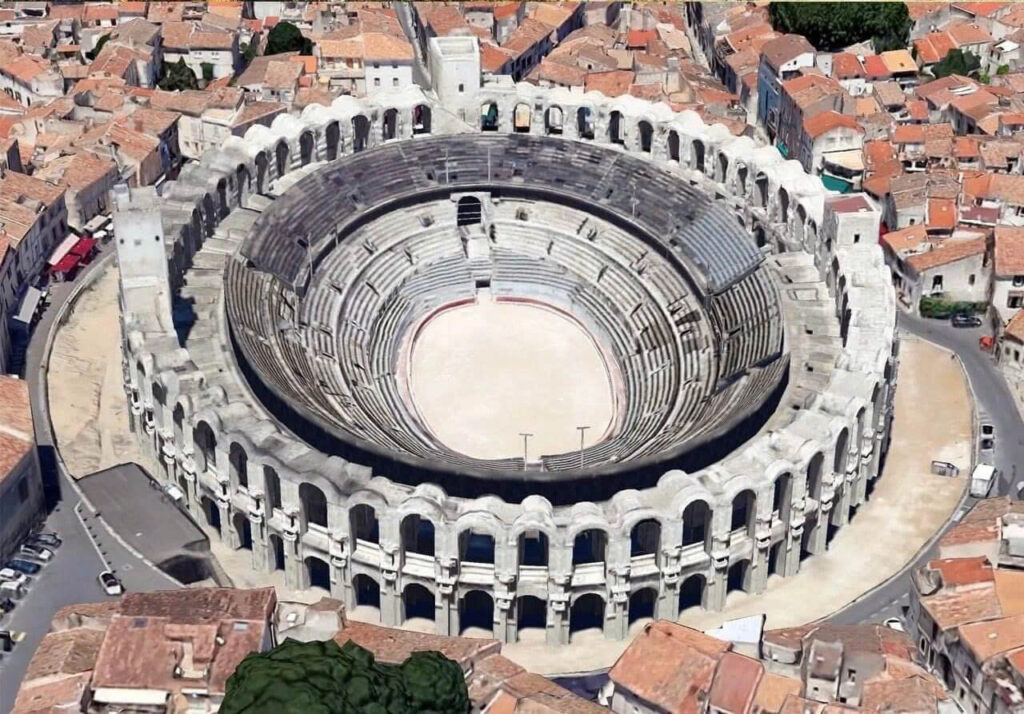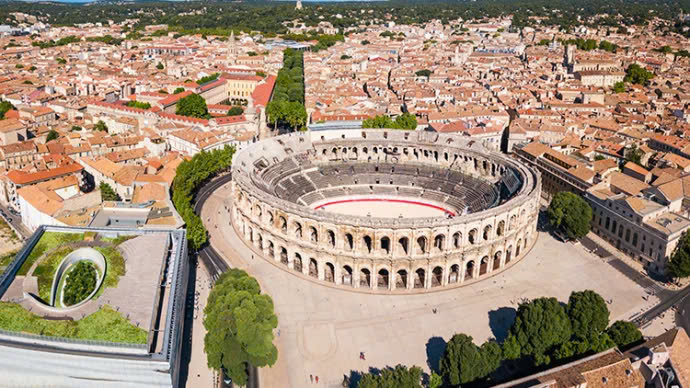Built in 90 AD, the Roman amphitheater in Arles, France, stands as one of the largest in ancient Gaul, with a seating capacity exceeding 20,000 spectators. This grand structure, measuring 136 by 109 meters, boasts two tiers of 60 arches, adorned with Doric columns on the lower level and Corinthian columns above, reflecting the architectural brilliance of the Roman Empire.

From Arena to Medieval Fortress
During the Middle Ages, the amphitheater fell into disrepair, leading to the construction of nearly 200 homes within its massive walls. To fortify the site, four defensive towers were added, transforming it into a structure resembling a medieval fortress.

Restoration and Revival
In 1825, the renowned writer Prosper Mérimée spearheaded efforts to reclaim this historic landmark. A large-scale restoration project began, dismantling the residential structures and restoring the amphitheater to its former glory. By 1830, excavations were complete, and the site hosted its first event in centuries—a bullfight, marking its return as a venue for public spectacles.

A Living Legacy
Recognized as a UNESCO World Heritage Site in 1981, alongside other Roman and Romanesque monuments in Arles, the amphitheater continues to thrive as a center for theatrical performances, musical concerts, and cultural events. Standing as a testament to Roman ingenuity and historical resilience, it remains one of the most remarkable architectural treasures of the ancient world.


